The week at a glance
- Greater Yellowlegs in Highland and Northumberland
- Pied-billed Grebe again in Cork
- Western Sandpiper still in Norfolk
- Bufflehead still in Cornwall
- Sharp-tailed Sandpiper still in Somerset
- Buff-bellied Pipit still in Waterford
After what has been an exceptional three months for rare and scarce birds across Britain and Ireland, the second week of December crept by in somewhat subdued fashion. Despite the UK's worst storm for a decade wreaking havoc across northern areas early in the week, there was unfortunately precious little associated ornithological excitement.
Given the weather, it was of little surprise that the most significant discoveries of the week both came from the west. In Highland, a first-winter Greater Yellowlegs was found at Loch Fleet on 14th. This would be the third individual of 2011 if it proves not to be its predecessor, which was still touring the Northumberland coast earlier in the week — after being seen at Cresswell Pond on 8th, it relocated to the East Chevington/Hemscott Hill area on 9th–12th but wasn't reported again. Several hundred miles to the southwest, a Pied-billed Grebe was (re-)found at the east end of Little Island (Cork) on 11th. This has to be the individual that spent much of last winter in the same area, coincidentally also found on 11th December 2010.
It was otherwise business as usual. In Norfolk, the first-winter Western Sandpiper continued to entertain a steady procession of admirers to Cley Marshes throughout the week, as well as generating protracted (and cyclical!) discussion regarding the identification of winter-plumaged Nearctic stints.

Western Sandpiper and Dunlin, Cley Marshes NWT, Norfolk (Photo: Stephen Allen)
Although its Dunlin cohort had dwindled to just a single bird by 11th, Somerset's Sharp-tailed Sandpiper was still at Chew Valley Lake before moving to nearby Blagdon Lake on 12th–14th. Also in the southwest, the Wilson's Snipe was again at Lower Moors, St. Mary's (Scilly) on 11th and the female/first-winter Bufflehead remained in situ at Helston Loe Pool (Cornwall) to 11th. Just across the Irish Sea, the Buff-bellied Pipit as still performing very well among the rotting kelp along Clonea Strand (Waterford) to 11th.
It was a better week for Black Brants: regular birds were again at Wyke Regis (Dorset) on 9th and at Old Hall Marshes (Essex), Dungarvan (Waterford) and Wexford Wildfowl Reserve all on 11th. Two were again at Donna Nook (Lincs) on 12th, and another toured the Orwell Estuary (Suffolk), last being seen at Trimley Marshes on 13th. The Richardson's Canada Goose was still at Torr Reservoir (Somerset) on 10th–12th. There was a report of an impressive three Lesser Canada Geese among the Pink-feet at Loch Leven (Perth & Kinross) on 9th, while Lancashire's elusive Todd's Canada Goose was again logged at Barnaby's Sands then near Cleveleys on 11th. Last week's three Red-breasted Geese were still in residence with 'good' birds still at Old Hall Marshes on 10th–12th and at Topsham (Devon) on 12th then Exminster Marshes on 14th. The first-winter of unknown origin was still at Harwood Dale (N Yorks) to 12th.
The two white geese touring east Norfolk with Pink-footed Geese were finally identified as Ross's Geese at Berney Marshes on 11th, moving to fields near the A47 west of Great Yarmouth later that day and remaining to 12th. Another Ross's was new in with Barnacle Geese at Burgh Marsh (Cumbria) on 14th. The blue-morph Snow Goose was again at Lower Lough MacNean (Fermanagh) on 13th and the white morph was still at Inch Island Lake (Donegal) on 14th. However, the only British report this week concerned the three white morphs still in Lancashire, seen at Leighton Moss on 9th and 12th and at Warton in between. Unfortunately, this triumvirate is more likely trans-Pennine rather than transatlantic — there are plenty of free-flying birds at the University of York, not to mention in the Netherlands....
There were still plenty of Tundra Bean Geese around this week, predominately in northern and eastern areas. An astonishing count of 158 was made at Loch of Strathbeg (Aberdeenshire) on 10th, suggesting that there are probably still a lot more unaccounted for in some of the more sparsely watched areas of Scotland. Several groups of 20s and 30s were well spread, although most records consisted of singles or small groups among other geese. The Taiga Bean Goose was still at Lebberston (N Yorks) to 13th, while others were on Fair Isle (Shetland) on 11th and at West Chevington (Northumberland) on 12th. There were also several big flocks of European White-fronted Geese around, including an impressive 122 at Hornsea Mere (E Yorks) on 9th and 92 at Nosterfield (N Yorks) on 11th. Eighty at Loch of Spiggie (Shetland) on 13th was an excellent tally for the archipelago.
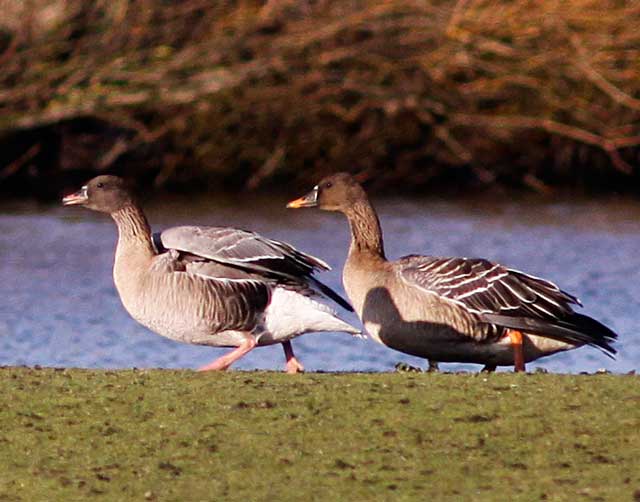
Taiga Bean Goose with Pink-footed Goose, Lebberston, North Yorkshire (Photo: T. Hobson)
It was a good week for Green-winged Teal, with drakes reported from twelve sites. New birds were at Vane Farm (Perth & Kinross) on 8th–11th and at Brow Marsh (Shetland) on the latter date. A drake at Eyebrook Reservoir (Leics) on 11th–12th must be a returning bird, while others were still at Fairburn Ings (W Yorks), Cley Marshes (Norfolk), East Chevington (Northumberland), Hodbarrow (Cumbria), Soulseat Lough (Dumf & Gall), Kinneil Lagoon (Forth), Carrowmore Lake (Mayo), Belfast Lough (Antrim) and Burton Mere Wetlands (Cheshire). Blue-winged Teal remained at Porth Hellick, St. Mary's (Scilly) on 9th–10th, Bull Island (Dublin) on 10th and Longham Lakes (Dorset) to 13th. Just three continuing drake American Wigeon were reported — at Heck (Dumf & Gall) on 8th and 14th, Wintersett Reservoir (W Yorks) on 9th–10th and Dawlish Warren (Devon) on 10th–14th.
After a brief visit to Chew Valley Lake back in early November, Somerset's drake Lesser Scaup was relocated in the southwest of the county at Wimbleball Lake from 9th. The long-staying first-winter female was reported again at Marden Quarry (Northumberland) on 12th, and the female returned to Slimbridge (Glos) from 13th. It seems almost bizarre that there has been such a paucity of the species so far this winter, despite the excellent autumn for a huge variety of other Nearctic species. In contrast, a better showing of eleven Ring-necked Ducks came this week. Two drakes at Carrowmore Lake (Mayo) on 10th comprised the usual adult and a newly arrived first-winter, while other Irish individuals were still at Lough Shivnagh (Donegal) on 9th and Lough Cowey (Down) on 11th. Back across the water, two drakes were found at Chard Reservoir (Somerset) on 14th, and one again returned to Cowpen Bewley Woodland Park (Cleveland) on from 10th, with familiar drakes also still at Weston-super-Mare Sewage Works (Somerset) on 10th and Gwithian (Cornwall) on 8th–11th. In east Norfolk, the only female of the week was again at Ranworth Broad on 14th and, on 11th, a drake was reported on the opposite side of the county at Snettisham (but not again since). It was the first week for some time that no Ferruginous Ducks were reported.

Ring-necked Ducks, Chard Reservoir, Somerset & Bristol (Photo: R G Harris)
In Moray/Nairn, the drake King Eider was again showing well in Burghead harbour on 11th–13th, and the female Surf Scoter again returned to the waters off Dawlish Warren (Devon) on 10th. A stunning drake Common Eider at Rudyard Reservoir on 11th–13th was presumably a casualty of the unsettled conditions experienced earlier in the week. A Ruddy Shelduck at West Wittering (W Sussex) on 10th was the only individual reported.

King Eider with Eider, Burghead, Moray & Nairn (Photo: Tony Backx)
Orkney chipped in with a juvenile White-billed Diver at Graemeshall on 12th, although the stormy conditions failed to produce more than a couple of new Great Northern Divers at inland sites, those being at Castleshaw Reservoirs (Gtr Man) and Farmoor Reservoir (Oxon) from 9th.
Slightly fewer Great White Egrets were reported this week, presumably attributable to the five in Somerset going walkabout. One again at Symbister, Whalsay (Shetland) on 9th was the most northerly individual, followed by a new Scottish bird at Balnamoon (Angus & Dundee) from 12th. Long-staying birds were still in Kent, Hampshire, Somerset, Lincolnshire, Nottinghamshire, Lancashire, Cumbria and Carmarthenshire, while flyovers in London were at New Malden on 11th and Crayford Marshes on 13th. The only Cattle Egret this week was in Northern Ireland, roosting again at Hillsborough Lake (Down) on 10th. A Glossy Ibis reported over Conder Green (Lancs) on 11th was relocated at Leighton Moss from 13th, but the only other record this week was the Fingringhoe Wick (Essex) bird which roosted again on 14th.

Great White Egret, Oare Marshes NR, Kent (Photo: Steve Ashton)
The identification of a juvenile Pallid Harrier was finally clinched as it went to roost at Lough Corrib (Galway) on 11th; it has been present since early November but frequents a sensitive area of the lake. Wintering records are far from unprecedented and, after such an exceptional autumn for the species, it seems likely that one or two more may be found among harrier roosts in the weeks to come. There was a sole report of a Black Kite over Burnham Market (Norfolk) in the afternoon of the 10th.

Pallid Harrier, Lough Corrib, Galway (Photo: Dermot Breen)
A new juvenile Rough-legged Buzzard proved both showy and popular at Gedling Pit Top (Notts) from 10th, while two continued to roam the Holkham area (Norfolk) throughout the week and another remained at The Burgh (W Sussex) on 9th–10th. Further individuals were reported at nine east-coast sites from Shetland to Kent.
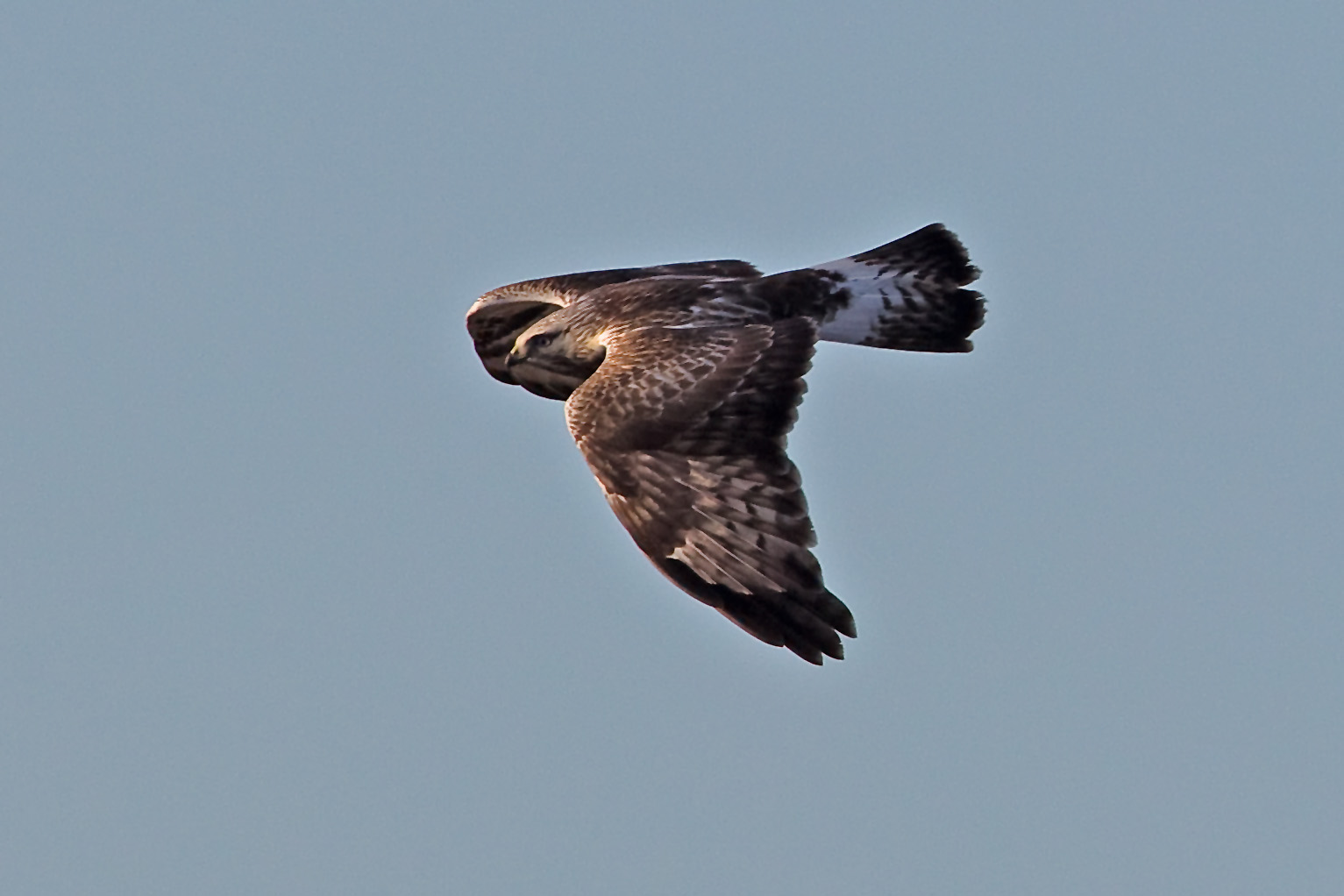
Rough-legged Buzzard, Gedling, Nottinghamshire (Photo: Simon Richardson)
An abnormal wealth of Nearctic waders appears to be settling down for the winter in Britain and Ireland. In Kerry, the juvenile Least Sandpiper was still scuttling around Black Rock Strand on 10th–11th — if it stays, it will represent the first wintering record for the Emerald Isle and follows just a single famous British record involving one frequenting a Cornish field in early 1986. The two Long-billed Dowitchers continued to commute between Chew Valley and Blagdon Lakes (Somerset) to 13th, and the adult Spotted Sandpiper was also still at the former site to 13th. The only other Spotted Sand reported was the Plym Estuary (Devon) bird, which was present all week. The Pectoral Sandpiper was again at Rainham Marshes (London) on 8th and, although not Nearctic in origin, the Temminck's Stint on Pit 84 at Cotswold Water Park (Glos) looks to be here for the festive season, remaining to 12th at least.

Least Sandpiper, Black Rock Strand, Kerry (Photo: Derek Charles)

Spotted Sandpiper, Chew Valley Lake, Somerset & Bristol (Photo: Paul Bowyer)
Love them or hate them, it is an unavoidable truth that gulls are becoming more prominent as December progresses. Pride of place again goes to the juvenile American Herring Gull, still in Baltimore harbour (Cork) on 10th. Although the greater coverts and tertials are quite well patterned, this chocolaty beast is still an excellent example of this taxon, complete with heavily barred rump and undertail coverts, a predominately black tail and striking dark brown secondary bar. Just six Irish Ring-billed Gulls included new first-winters at Lough Aderra (Cork) on 11th and Tralee (Kerry) on 12th, with a returning adult again at Bellydehob (Cork) on 10th. Four British records involved a new adult at Chew Valley Lake (Somerset) on 12th. In West Yorkshire, the adult was again at Sands Lane Gravel Pits on 9th, and long-stayers were still at Stornoway Harbour, Lewis (Outer Hebrides) on 8th and Gosport (Hants) on 9th–12th.
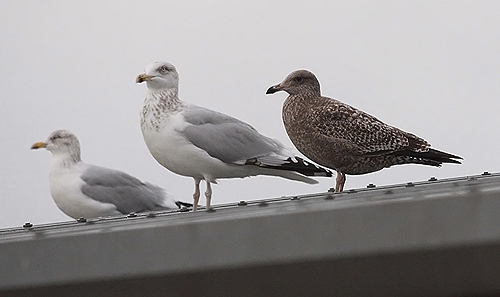
American Herring Gull with Herring Gulls, Baltimore, Cork (Photo: Derek Charles)
The velvety juvenile Kumlien's Gull was again at Dunbeg (Argyll) on 10th — most opinion now seems to have settled on this being a dark kumlieni rather than a Thayer's Gull. A juvenile Kumlien's flew past Labost, Lewis (Outer Hebrides) the same day, while the striking adult with dark grey primaries was still at Hamister, Whalsay (Shetland) on 9th. The 38 Iceland Gulls reported were predominately in Scotland, including fours at Stornoway, Lewis (Outer Hebrides) on 8th and Lerwick (Shetland) on 11th. For once, Glaucous Gulls were present in similar numbers, with 36 birds reported during the week. Twos were noted from Ditchford Gravel Pits (Northants), Long Nab, Burniston (N Yorks), Ardivachar Point, South Uist (Outer Hebrides), Fair Isle (Shetland) and Ormsary (Argyll), but precious few were reported from Ireland — no doubt due to a lack of coverage of the major west-coast fishing ports during the week. Around 25 Caspian Gulls were reported — a slight decrease on the previous week.
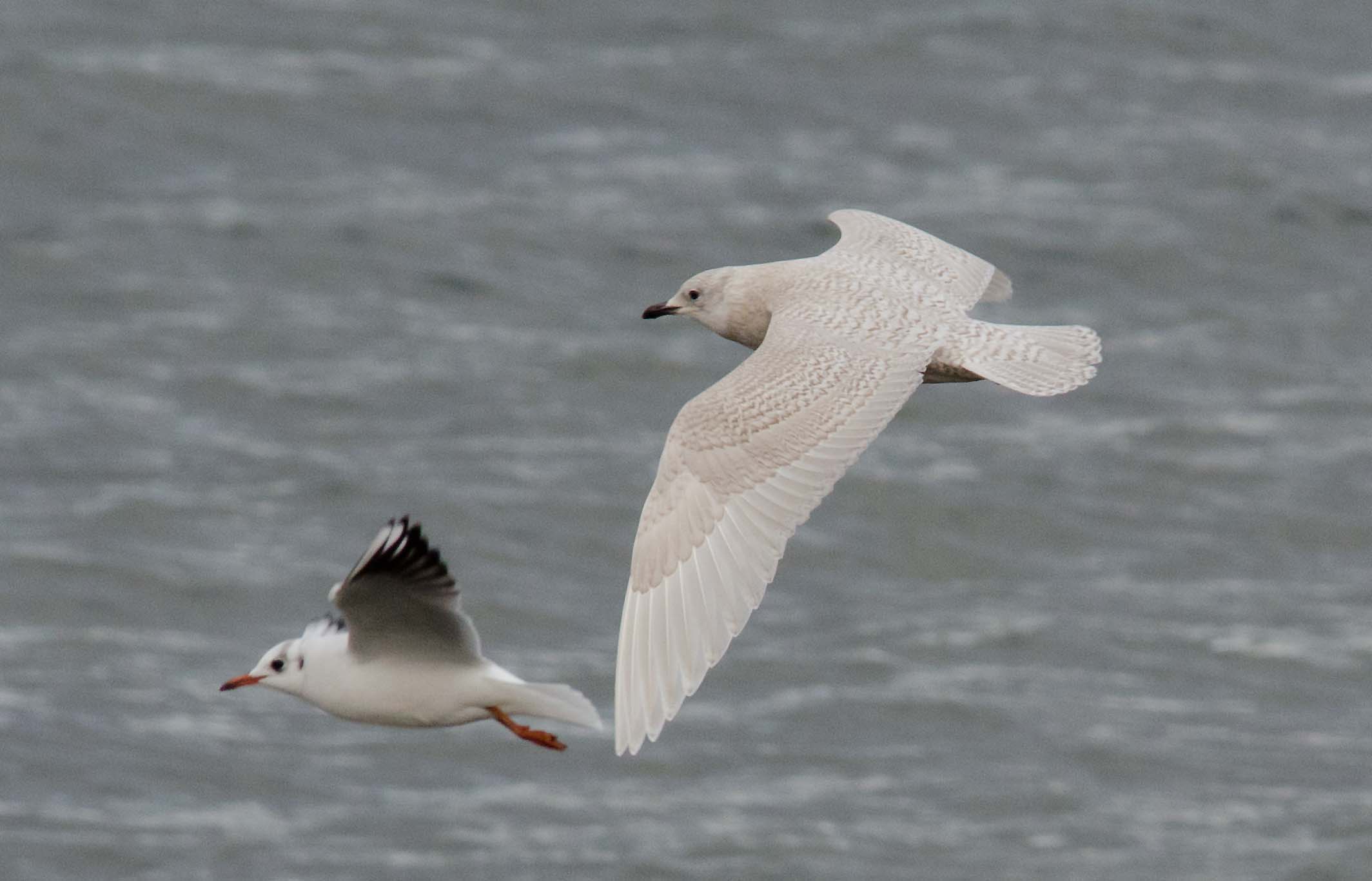
Iceland Gull, Loch na Keal, Mull, Argyll (Photo: Bryan Rains)

Glaucous Gull, Ardglass, Down (Photo: Craig Nash)
The five Sabine's Gull records this week all occurred in conjunction with the inclement meteorological conditions on 8th, with birds recorded past Caerlaverock (Dumf & Gall), Porthcawl (Glamorgan), Slimbridge (Glos), Clevedon (Somerset) and Thurlestone (Devon). Despite the weather, seawatching was still relatively uninspiring — just eleven Grey Phalaropes were noted from ten sites, including lingering birds still at Hartlepool Headland (Cleveland) to 9th, and at Martin Mere (Lancs) and Stevenston Point (Ayrshire) both to 14th. A couple of Leach's Storm-petrels were seen, off Bowness-on-Solway (Cumbria) on 13th and Heysham (Lancs) the next day. There were still a few Little Auks in the North Sea with a peak of 49 north past Flamborough Head (E Yorks) on 11th; a couple of individuals were also seen off West Sussex the same day. A widespread smattering of Pomarine Skuas included a bird taken into care at Strathclyde Loch (Clyde) on 10th, although Balearic Shearwater records were restricted to just Cornwall and the Channel Islands.
A Hoopoe at Blackhall (Louth) on 11th–12th is likely the same bird as that last seen at nearby Almondstown on 26th November. Last week's Richard's Pipit was still at Wyke Regis (Dorset) to 10th, and a new bird was at Gibraltar Point (Lincs) on 9th–12th. A slight upturn in Shore Lark records included a flock of ten at Holme Dunes (Norfolk) on 10th, the long-stayer still at Swalecliffe (Kent) the same day, and three again on the slag tips at Warton (Lancs) on 11th. Swallow records fizzled out, with just a single report of one over Berrow (Somerset) on 11th.
Shetland's first Desert Wheatear for eight years was eventually located for the masses along the shore in Lerwick (Shetland) on 11th–14th, after being reported as an unidentified wheatear sp. back on 7th. Three further individuals, all familia, lingered into the week: the female was still at Titterstone Clee Hill (Shropshire) to 10th, and males were still at Bempton Cliffs (E Yorks) on 9th–13th and Newbiggin-by-the-Sea (Northumberland) to 14th. Northern Wheatears were at Bull Island (Dublin) on 11th and Boulmer (Northumberland) on 13th–14th.

Desert Wheatear, Lerwick, Mainland, Shetland (Photo: Dougie Preston)
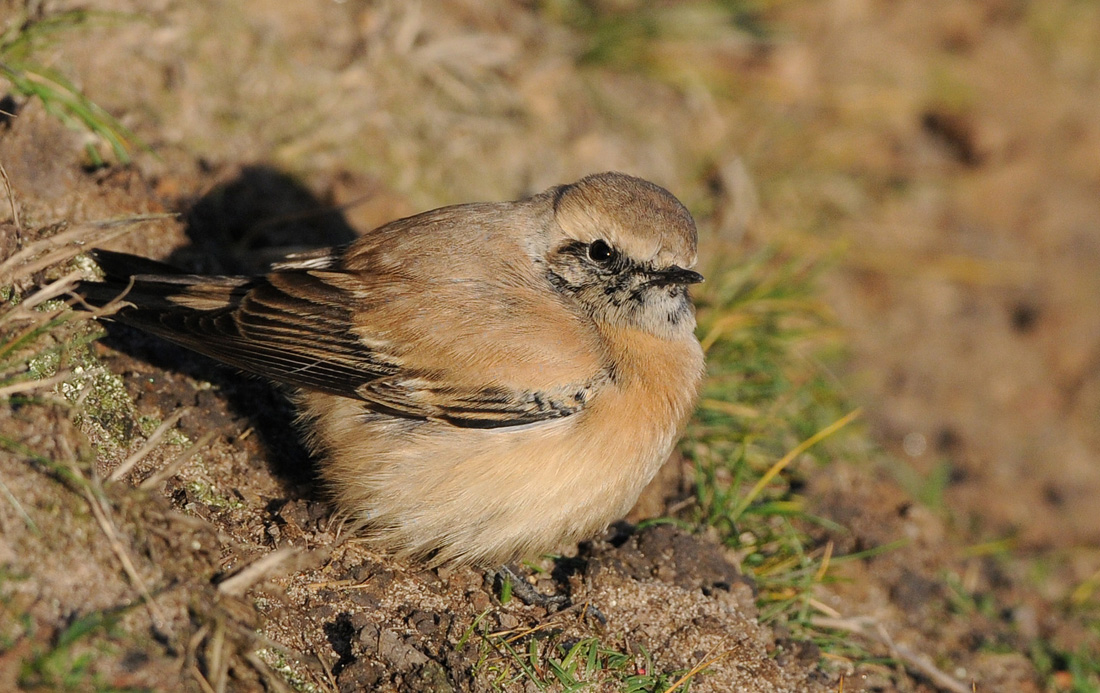
Desert Wheatear, Newbiggin-by-the-Sea, Northumberland (Photo: Ron Hindhaugh)
The male Bluethroat remained at Clonea Strand (Waterford) to 9th only. Waxwings are not showing any signs that an invasion is imminent: there were only 25 reports on Bird News Extra all week. The largest group was of 60 in Edinburgh (Lothian) on 10th, while popular flocks included up to 30 in Reydon (Suffolk) and 24 in Norwich (Norfolk) for much of the week.
Rather predictably, the southwest continued to dominate late-season Phylloscopus action. On St. Mary's (Scilly), the two Dusky Warblers were still at Lower Moors on 9th, with one remaining until 13th. Lower Moors also continued to harbour two Yellow-browed Warblers to 9th, while last week's new arrival was still at Clennon Valley Lakes (Devon) to 14th. Less typical was an isolated report from Bootle (Lancs) on 12th. In Dorset, the Hume's Leaf Warbler remained faithful to Wyke Regis throughout, and the Garden Warbler was still in Penzance (Cornwall) on 9th.
Seventeen Great Grey Shrikes were well spread across the country. England scored the majority, with thirteen individuals including new birds at Burnham Market (Norfolk) on 10th–12th and Hatfield Moors (S Yorks) on 14th. Wales and Scotland registered two birds apiece, the only new individual being that at Moy (Highland) on 12th.
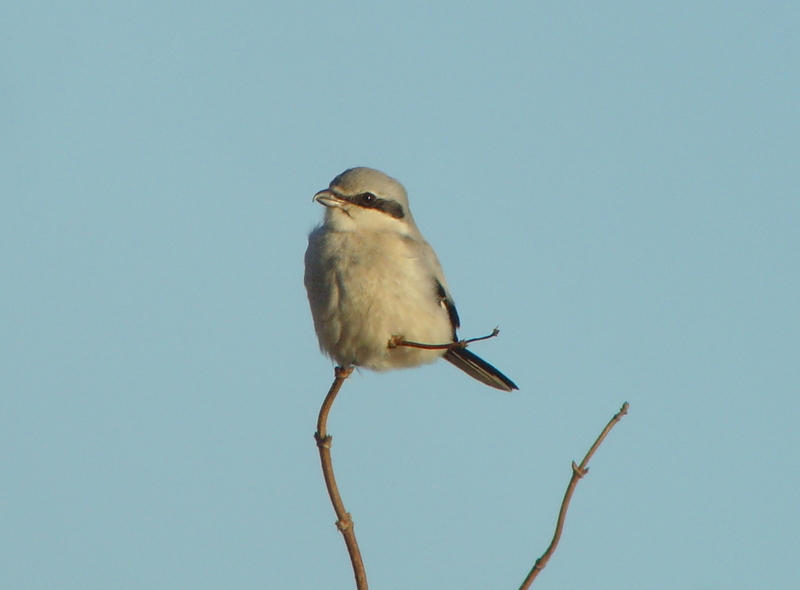
Great Grey Shrike, Guardbridge, Fife (Photo: John Nadin)
The male Penduline Tit at Dungeness (Kent) proved less tantalising this week, being seen on 8th and again on 12th–13th. It would appear the bird sports a metal ring, thus making it the same individual that spent February and March of this year around the reserve. The House Crow was still parading around Cobh (Cork) on 11th, although you probably could have guessed that...
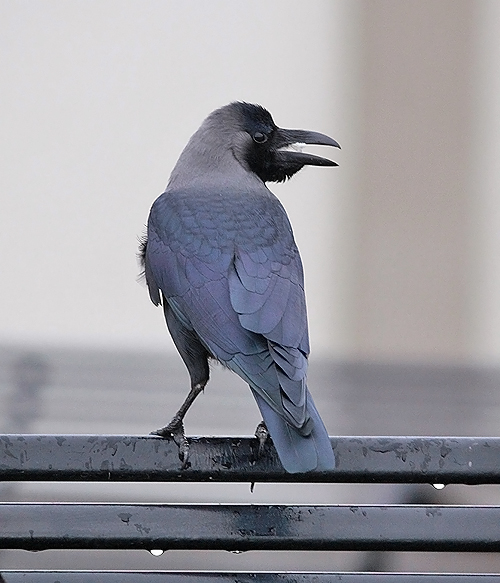
House Crow, Cobh, Cork (Photo: Derek Charles)
A first-winter Coues's Arctic Redpoll was an excellent find among a small redpoll flock around the visitor centre at Titchwell (Norfolk) this week, although images that have subsequently emerged show the bird to have been present since at least 24th November. Although quite heavily streaked on the flanks, it otherwise looks a classic exilipes and is instantly recognisable by its regrowing middle tail feathers. The alder stands on the reserve have an excellent track record with this species over the past decade with popular, long-staying birds also present in winters 01/02 and 04/05.

Coues' Arctic Redpoll, Titchwell RSPB, Norfolk (Photo: Andy Thompson)
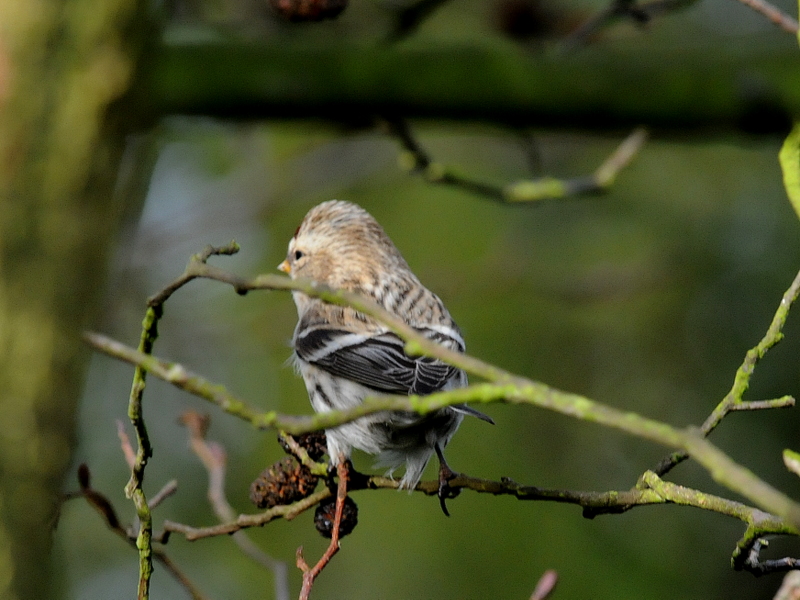
Coues' Arctic Redpoll, Titchwell RSPB, Norfolk (Photo: Tony Duckett)
A Little Bunting trapped and ringed at Grouville Marsh (Jersey) on 10th follows another ringed there in late November.
With Britain and Ireland forecasted to be the subject of a continued battering from North Atlantic weather systems over the next few days, perhaps a mega storm-driven waif is just around the corner — many of us would appreciate the fresh arrival of Nearctic wildfowl and gulls that is so often associated with such conditions. Having said that, most would have been pretty chuffed with Highland's Greater Legs had today been five weeks earlier...
Photo of the Week: 8th–14th December

Short-eared Owl, undisclosed site, West Sussex (Photo: Howard Kearley)
Over the last two months, it seems as though UK bird photographers have decided that Short-eared Owls are this season's 'must have'. Week by week, we've been receiving a stream of SEO images — both portrait and flight shots — that push the bar ever higher. Every time this situation arises, photographers are forced to think beyond incrementally improving the technical aspects of their images and creativity finally kicks in. At this point, we start to see images of the birds doing something other than just perching and flying around. The resulting behavioural shots then give us an insight into how the birds live, rather than just what they look like. This week, we've had several images that capture aspects of SEO behaviour, from how they carry their prey to how they interact with each other both on the ground and in the air. In fact, where multiple SEOs share a hunting territory, mid-air tussles are common but, since they last only a split second, they fall into the (large) category of bird behaviours that are more often seen than photographed. Bird photographer Howard Kearley tackled this deficit expertly this week, with a perfectly timed action shot showing one bird using its hunting action in mid-air to force another downwards. Superb poses, lighting and background convey everything you need to know about an event that would have been over in the blink of an eye. If Howard had a machine that could slow down time, could he have timed this shot better? We don't think so.
Other notable photos
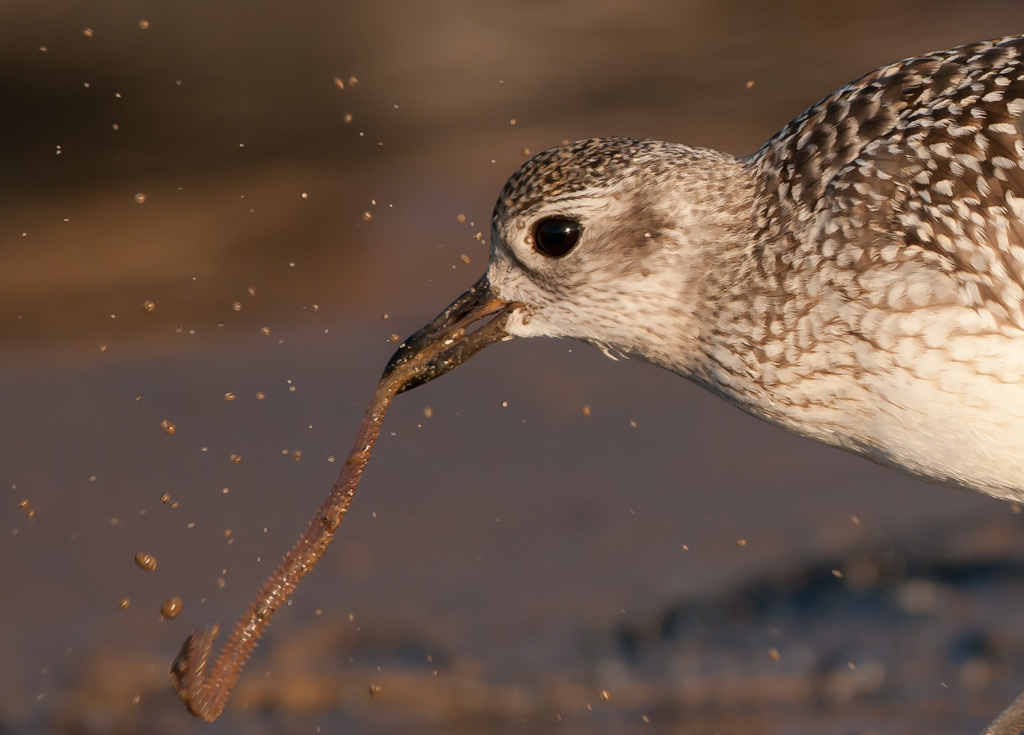
Grey Plover, Filey, North Yorkshire (Photo: Martin Standley)

Black-shouldered Kite, India (Photo: Ram Mallya)

Gambel's Quail, United States (Photo: Alex Woodruff)

Wren, Hungary (Photo: Eduardo Balogh)

Bittern, Gosforth Park NR, Northumberland (Photo: Terry Cavner)
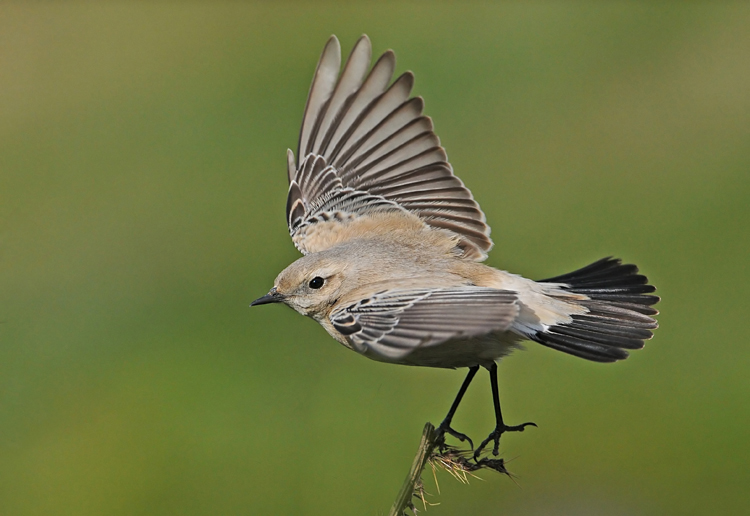
Desert Wheatear, Titterstone Clee Hill, Shropshirehire (Photo: Kev Joynes)

Dunlin, West Kirby Marine Lake, Cheshire (Photo: Steve Dolan)

King Eider, Burghead, Moray & Nairn (Photo: James Wood)

Goldcrest, Grove Ferry NNR, Kent (Photo: Steve Ashton)

Black-tailed Godwit, Woodbridge, Suffolk (Photo: Bryan Wright)


